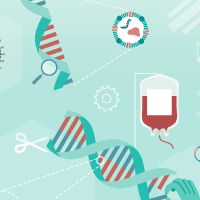Switching from ex vivo to in vivo: approaches and considerations for generating cell therapies directly in the patient upon in vivo gene delivery
Cell & Gene Therapy Insights 2024; 10(5), 637–651
DOI: 10.18609/cgti.2024.076
Recent innovations in gene delivery and genome editing have paved the way for new and rapid approvals in the field of cell and gene therapy. Several ex vivo CAR-T products have been approved for oncology, and are currently being studied for other indications such as autoimmune disease. However, the complex nature and the costly manufacturing of ex vivo cell therapy creates a bottleneck in how many patients can access these therapies. Viruses such as HIV-1 evolved to infect T cells. Therefore, it may be possible to harness lessons from virology to develop viral vectors that, for example, generate CAR-T cells directly in the patient upon direct in vivo administration, bypassing the need for any ex vivo cell therapy manufacturing. The prospect of administering viral vectors directly to patients for the purpose of creating CAR-T cells or similar cellular therapies in vivo may someday become a reality, but it presents unique challenges. This article describes a possible path to the development of such in vivo therapies that utilize gene delivery by summarizing the approaches and considerations from the route of delivery, the biology of the delivery agent, to the CMC and regulatory challenges.
